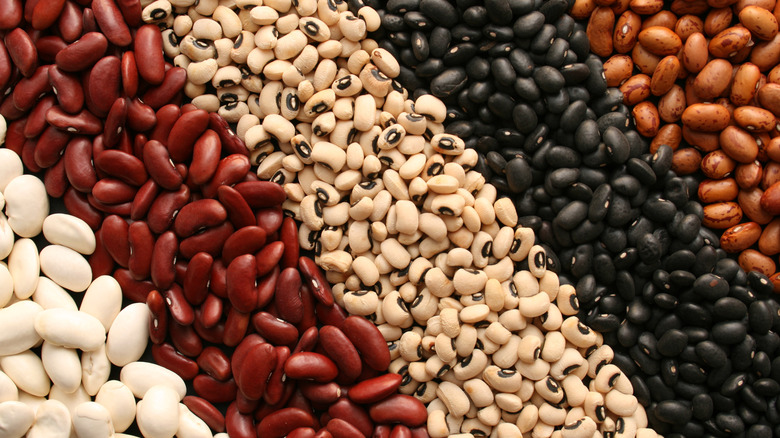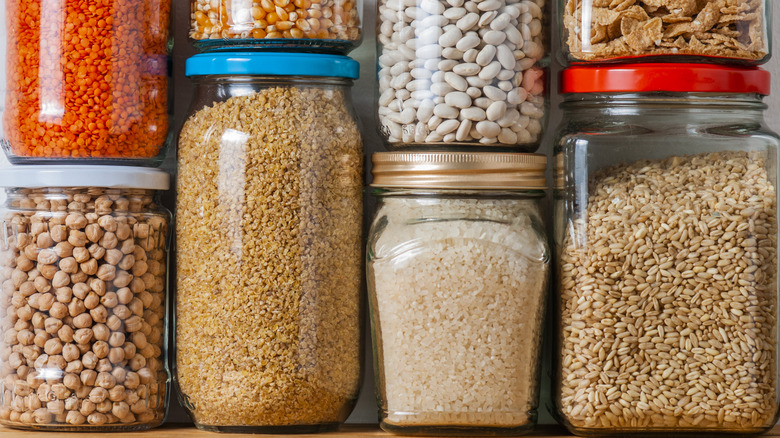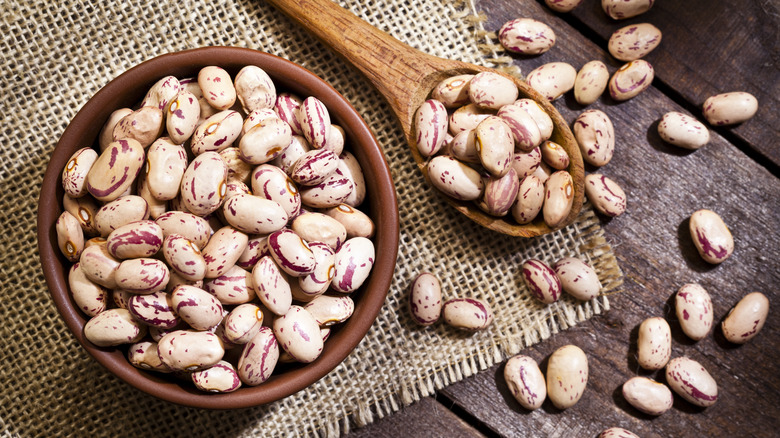Do Dried Beans Ever Really Expire?
There are a surprising number of foods that have a surprisingly long shelf life, including pantry staples like salt and sugar. Dried beans are among those foods, and here's the thing: Even though you can safely stock up on dried beans in a big way, you should keep in mind that their long shelf life depends on proper storage. They will start to lose their quality and nutritional punch after a few years even when properly stored, although they may still be perfectly safe to eat.
Although concrete research on the viability of dried beans is surprisingly lacking, we do know that there's an established pattern of degradation that's been found to exist in other foods that have a long shelf life. In a nutshell, vitamin content starts declining at around the two to three year mark. By the time foods are about five years old, vitamins are gone (although other nutrients remain).
With that five-year rule in mind, here's some food for thought. The longevity of dried beans is closely linked to proper storage, and some factors — like temperature — might be hard to control. Canned beans also have a long shelf life, can go as long as five years without their quality deteriorating, and depending on your kitchen space, they may be easier to store. That said, it is possible for dried beans to go bad.
Dried beans can still go bad
Beans have been linked to all kinds of health benefits such as greater heart and gut health. They're widely known as being a great source of vitamins and minerals, and multiple scientific studies suggest they may improve heart health, help with the regulation of blood sugar, and even help balance cholesterol levels. While they might technically have a shelf life that can last for up to a decade if packaged properly, 10-year-old dried beans aren't going to be the same as year-old beans. In addition to likely losing their vitamin content over time, consumer panelists have found that they can also decline in quality. However the beans were still considered acceptable. There is, however, another potential problem.
Beans that have been sitting in the back of your pantry for a few years can also become harder to use. In some cases, they could become difficult or impossible to rehydrate — and hard water can be particularly troublesome when it comes to rehydrating beans — but all is not lost: They can still be ground into bean flour, which can then be used to replace other types of flour in various recipes. They may also take longer to cook, and it's worth mentioning that eating undercooked beans can be incredibly dangerous. Some — including kidney and cannellini beans — can cause severe food poisoning when undercooked. That's because of a toxic compound called lectin, which breaks down when beans are properly soaked, boiled, and cooked.
Storing beans properly means they'll keep for at least a decade
In order for dried beans to last for as long as possible, there's a few things that need to be taken into consideration. Temperature can have a major impact on the longevity and freshness of all types of dried beans, and the general rule is that cooler temperatures are better. That means keeping them in a place that doesn't get warmer than around 70 degrees Fahrenheit.
The best way to store dried beans is in an airtight container or heavy plastic bags. If you bought in bulk, you also might want to consider dividing your dried beans into multiple containers: If one bag goes bad, you may still be able to use the other bags. That said, there are a few things that can go wrong with dried beans.
Bugs can definitely ruin an entire batch of dried beans, and mold is another concern. When you're using dried beans that have been around for a while, check them carefully for any signs of discoloration, as it can be a sign that they're starting to mold. When opening a container, it's always advised to give it a sniff. If they've been sealed for a while and they start to smell moldy, rancid, or otherwise odd, it's better to get rid of them than take the risk of making everyone ill. Bottom line? Use up those beans in a delicious dish of baked beans before they sit around for a decade.


